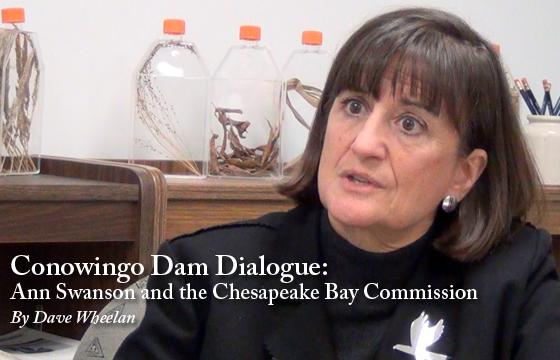It’s fair to say that Ann Swanson has been around the block more than a few times with regard to Chesapeake Bay restoration. Swanson has been involved with Bay clean up efforts for more than three decades, most of it in her capacity as executive director of the Chesapeake Bay Commission. So it was not too surprising that she offered a very candid assessment of the role and impact of the Conowingo Dam.
In fact, she also has been watching the Conowingo for most of her professional career. And like many experts in the bay restoration field, she suspected that the Dam’s role in delivering unwanted sediment and nutrient pollution, particularly after catastrophic events like tropical storm Lee, into the Chesapeake was significant.
Nonetheless, as a Yale trained wildlife biologist and forest ecologist, Swanson trusts science over instinct, and she, along with many colleagues, were surprised to find that the Corp of Engineers 2014 assessment of the Lower Susquehanna River, including the role of the Conowingo, was not the smoking gun she thought it would be.
In her Spy interview, Swanson talks very candidly about her early assumptions about Conowingo Dam, but also her more powerful conviction that local governments must accept the reality that local source pollution is the real smoking gun when it comes to the damaging the bay and our rivers.
This video is approximately ten minutes in length



Steve Payne says
Local source sediment pollution isn’t exactly a surprise or “smoking gun”. Everyone knew it needed to be corrected they just didn’t want to do it. But until it is addressed locally, most of it must be trapped prior to reaching the Bay. That’s what the Dam does and it will fill back up. But that’s what it’s supposed to do.
So you really need both problems fixed in the in the Susquehanna watershed until that drainage area is stabilized.